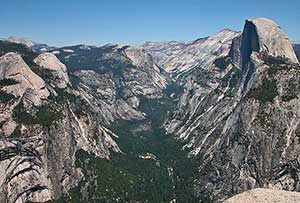A Glacier Carves a U-shaped Valley
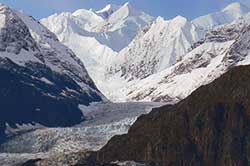
|
| Margerie Glacier showing the U-shaped valley being carved. |
 Glaciers and running water sculpt the land in different ways. While streams tend
to cut winding curves and V-shaped valleys, glaciers carve nearly straight valleys
with U-shaped cross-sections. The imposing, sheer rock walls of glacial troughs
(U-shaped valleys) are among the most fundamental and distinctive features of
glaciated landscapes. The U-shaped valleys left behind by valley glaciers are
usually 1 kilometer (1.6 miles) or more in width and typically hundreds of meters
high.
Glaciers and running water sculpt the land in different ways. While streams tend
to cut winding curves and V-shaped valleys, glaciers carve nearly straight valleys
with U-shaped cross-sections. The imposing, sheer rock walls of glacial troughs
(U-shaped valleys) are among the most fundamental and distinctive features of
glaciated landscapes. The U-shaped valleys left behind by valley glaciers are
usually 1 kilometer (1.6 miles) or more in width and typically hundreds of meters
high.
Follow along to see how it's done:
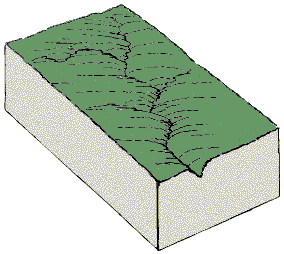
Start with a typical stream
As streams wind their way downstream they tend to cut away the outsides of bends and deposit sediment on the insides of bends. This gradually makes the stream valley more sinuous.Running water gradually cuts a deeper V-shape. The end result is a typical meandering, V-shaped stream valley.
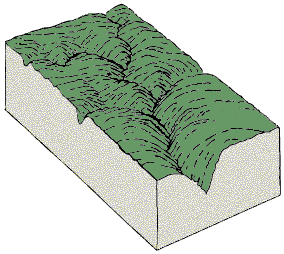
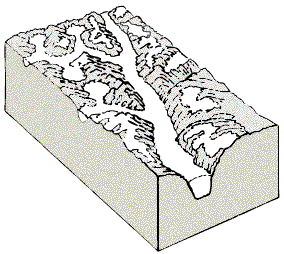
Glaciers move in
Climate cools and glaciers grow and begin their slow downhill push, usually taking the easiest path down - the path already cut by streams. Glaciers ooze into stream channels, but unlike streams, glaciers focus their grinding energy on the insides of bends. Bit by bit, the glacier eats away at the meandering curves of the original stream valley, carving a wider, straighter valley.
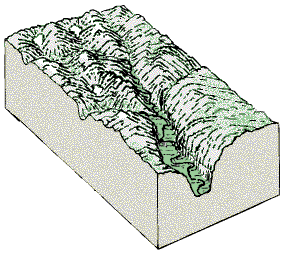
Work of a glacier revealed
During times with warmer climate like today's (called interglacial periods),
glaciers gradually melt away except at high elevations and latitudes. As glaciers
melt, their effect on the landscape is revealed. Former stream valleys have been
transfomed to broad, very steep-sided troughs and waterfalls cascade from hanging
valleys perched high above the valley floor.
Yosemite National Park
Yosemite Valley has often been referred to as a "classic" glacial valley. It's landscape as we see it today strongly reflects the dynamic influence of flowing ice that long ago covered much of its higher regions. Geologists are still uncertain how many times ice mantled Yosemite, but at least three major glaciations have been well documented elsewhere in the Sierra Nevada. In the higher country, icefields covered extensive areas, except for the higher ridges and peaks. Lower down the western slope, at middle elevations, glacial tongues were confined to pre-existing river canyons, such as those of the Merced and Tuolumne Rivers.In contrast to the sinuous V-shaped valleys of normal streams in unglaciated mountainous terrain, glaciated valleys tend to be straighter and have U-shaped profiles. Whereas a stream erodes the outsides of bends preferentially and makes its course more sinuous, glacial erosive force is concentrated on the insides of bends, removing the protruding spurs of the original stream valley and leaving a wider, straighter valley.
